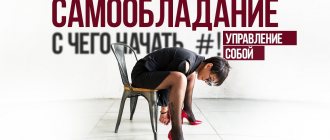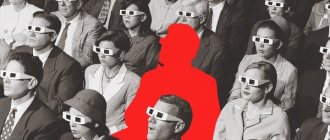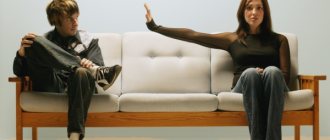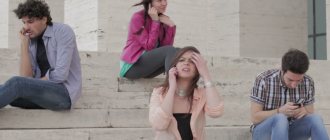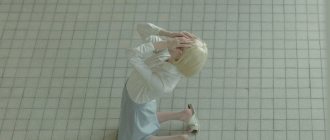Holotropic breathing is a unique technique created for use in psychotherapy. With the help of this technique, people experience experiences associated with unconscious experiences. The method is used as self-knowledge, as well as a journey into the hidden corners of a person’s consciousness.
The secret to the effectiveness of the technique lies in the activity of the subcortical layer of the brain, due to which the individual releases experiences. The practice of holotropic breathing was first discovered by Stanislav and Christina Grof, researchers of emotions in the field of psychotherapy. Experts have noticed that the air absorption technique replaces medications.
What is Holotropic Breathwork?
Holotropic breathing as a technique used in psychotherapeutic practice is a method of getting rid of serious psychophysical disorders. It was first explored by Stanislav Grof. Initially, holotrope served as a replacement for psychotropic drugs.
Carrying out such a procedure involves the suggestions of a psychologist against the background of intense breathing of the patient listening to special music.
A sitter or individual assistant during a breathing session helps the patient more effectively eliminate stress and negative emotions. The method helps to forget about bad habits, addictions, neuroses, and emotional disorders. Technology allows you to search for solutions to problems at a creative level and develop creativity.
The technique that stops the internal dialogue is due to immersion in human consciousness. The procedure opens up the possibility of moral liberation from experienced traumas, conflict situations, and psychological discomfort. The session forces a person to relive past emotions, which in a short time eliminates accumulated problems that are repressed by consciousness during the treatment process.
The holotropic breathwork procedure includes the following basic elements:
- adjusting the patient using relaxation techniques;
- the holotropic breathing session itself;
- technology integration.
The method ensures the elimination of obstacles that impede the full development of a person. The technique allows you to avoid rash actions in the future by removing internal blocks.
Human consciousness, freed from internal fears, is free to:
- creative self-expression;
- self-realization;
- self-actualization.
The psychotherapeutic technique of holotrope is based on immersing a person in a trance against the background of light music. The sitter alternates breathing with relaxation in a certain way. The technique is effective as an esoteric method of self-knowledge.
Note
Some points are not taken into account. Experts, please be calm. Grof himself describes the technique as follows: “It is a combination of intense breathing, specially selected physical exercises and music.” (12).
Also his words: “This practice is contraindicated for those who suffer from heart and vascular diseases, those who have had serious emotional problems in the past that led them to hospitalization in psychiatric institutions. It is known that hyperventilation of the lungs can provoke epileptic attacks. There are also common sense contraindications, such as recent surgery, injury, or simply a serious illness.”
Since the technique was invented to replace psychedelics, and the same mushrooms or LSD are slowly being legalized in different countries, perhaps in 10-15 years it will be less relevant (13).
Pros and cons of technology
The benefits of holotropic breathing technique are as follows:
- overcoming a large number of psychological barriers;
- changing your thinking to a more positive, creative and successful one;
- elimination of psychological trauma, relief from stress.
The disadvantages of the method include:
- decrease in hemoglobin in the blood due to trance, which causes the death of brain cells;
- classes can cause hysterics or hallucinations, as well as fainting;
- Gross mistakes by the sitter can lead to death.
Before using the holotropic technique, it is important to master the technique of proper breathing, otherwise the course of treatment will not bring results.
In the future, the procedures can cause serious health problems. Activities that cause irreversible consequences if carried out incorrectly are very dangerous. The trainer should not leave the holonaut anywhere in a state of trance in order to prevent excesses and provide all possible assistance if necessary.
What happens to the body during practice?
Frequent breathing leads to an excess of oxygen in the blood, while the level of carbon dioxide drops, which leads to a special condition - gas alkolosis. The pressure decreases, the blood vessels narrow, then oxygen starvation occurs, which is why experiences accumulated in the subconscious come to the surface.
Thanks to this practice, a person can better understand his inner world, which is confirmed by research. There was also a “positive effect on character development” - the method is believed to promote the development of empathy.
Photo: istockphoto.com
Holotropic breathing is used as a concomitant therapy in the treatment of:
- depression;
- stress;
- addictions;
- migraine;
- premenstrual syndrome;
- asthma;
- chronic pain.
How to meditate correctly: instructions for beginners
Differences between holotropic breathing and rebirthing and vibration techniques
Holotropic Breathwork is a type of healing that is included in the “Big Four” group according to its therapeutic purpose:
- Vivasion.
- Free breathing.
- Rebirthing.
- Holotropic breathing.
All mechanisms give the same result, but the difference between holotrope and the rebirthing technique lies not only in who is the developer of the method, but also in the way the session is conducted. Holotropic Breathwork was founded by a psychiatrist and rebirthing by a spiritual healer. Leonard Orr, unlike Stanislav Grof, emphasized an individual approach.
Holotrope has an optimal effect on the psyche during group sessions. Rebirthing is effective as an independent procedure, and not just a group healing method practiced by a coach. The breathing techniques under consideration have many common elements, but the contraindications to the use of these mechanisms are different.
Rebirthing sessions are not recommended for those suffering from serious mental disorders for which the relaxing procedures of the technique are too gentle. The holotropic technique is not recommended for people with severe limitations in movement. Both techniques provide the patient with the best understanding of his body.
The use of the vibration technique by experienced people does not require the presence of a trainer. The holotropic algorithm allows you to repress hopeless life experiences; an assistant is required during the procedure. Vivasion does not have as many contraindications as the holotropic healing method.
How to breathe correctly?
Breathing techniques differ in every sport, but they are united by a simple rule - don’t forget to breathe! Whether you are running or stretching, doing yoga or squatting with weights, your breathing should be even. Do not hold in the air, because then oxygen will not enter the body, and your strength will quickly leave you.
When performing exercises, it is important to remember that inhalation is done at the moment of muscle relaxation, and exhalation is done at the moment of their tension, when maximum effort is applied. For example, when lifting a barbell, you exhale as you lift it, and inhale when the barbell returns to the ground. When performing abdominal exercises, exhale when raising your legs or body, and inhale when lowering.
Breathing should be deep (diaphragmatic), but comfortable. When you inhale, your stomach should inflate. This may seem inconvenient, but it is with this type of breathing that the body receives maximum oxygen and does not expend energy, as with shallow, frequent breathing.
It also matters how the athlete breathes - through the mouth or nose. It is recommended to inhale through the nose, because the air passing through the nasal passages is warmed, moistened and cleansed of dust and microorganisms. It is better to exhale through the mouth, because this way the air will come out faster.
Basic Concepts of Holotropic Breathwork
Holotropic breathing as a method in psychiatry was registered by the Ministry of Health of the Russian Federation in 1993. The treatment system is associated with transpersonal psychology. In total, the practice of psychotherapy includes 28 methods.
Among the technical elements are:
- an encouraging melody;
- fast breathing of sufficient depth;
- techniques for releasing energy from the body;
- constant assistance to the patient.
Additionally, you can attend creative classes in clay modeling, free dancing, and mandala drawing. Holotropic Breathwork is an active spiritual healing that can only be realized in the presence of a sitter. A professional trainer conducts sessions with one holonaut or with a group of patients.
Before starting a course of treatment, the specialist is required to provide instructions to people who are about to undergo treatment. Before the session, the trainer divides all participants into pairs and explains the basic concepts associated with using the technique. The pair interacts with a helper (sitter) and a breather (holonaut). At the end of the procedure, roles change between the participants.
Harm and benefit of the method
Like any method or phenomenon, holotropic breathing has both positive and negative sides.
Benefits of HD
When used correctly, holotropic breathing is an effective way to get rid of long-standing psychological problems. Since there is a deep immersion into the subconscious, a person is able to discover repressed emotions and experiences, give them an outlet and level them out. Moreover, problems manifest themselves not individually, but as a whole block.
Therapy occurs independently, without the involvement of a psychotherapist. For example, in psychoanalysis, which is also based on the method of immersion in the unconscious, a person depends on the degree of qualification and integrity of the psychoanalyst and the decisions he makes.
You can practice sessions as often as necessary to achieve harmony and psychological comfort. HD is a great way to relieve everyday stress and tension.
Harm HD
In the professional environment, the attitude towards holotropic breathing is not unambiguous. Many scientists do not recognize it as a psychotherapeutic technique at all.
In two states of America, the use of a technique similar to HD, “rebirthing,” is prohibited at the legislative level. This is due to a fatality that occurred in 2000 with a 10-year-old girl during a rebirthing session. There are other examples of harm to health when using technology, including in Russia.
An argument against the use of HD is the fact that hyperventilation of the brain leads to the leaching of carbon dioxide from its cells and a sharp narrowing of blood vessels. This can cause deterioration in brain function due to the death of nerve cells.
In addition, despite the body’s existing protective resources, due to an excess of oxygen, cerebral edema and death can occur.
In this regard, the holonaut must be aware of the consequences that may occur, especially when using the method without the support of a sitter and the participation of a specialist.
Contraindications to classes
The active method of holotropic breathing is associated with the manifestation of body movements of the holontaut.
Based on this condition, contraindications to the use of the technique may be:
- acute infectious disease;
- pregnancy;
- dislocations and bone diseases;
- diseases of the cardiovascular system;
- brain diseases;
- bronchial asthma;
- glaucoma and increased eye pressure;
- mental disorders;
- congenital or acquired epilepsy;
- undergone operations.
Pregnant women and nursing mothers are strictly prohibited from practicing holotropic breathing.
The session may interfere with normal pregnancy, which is associated with the risk of miscarriage. Breastfeeding can also be interrupted by the mechanism. Massage sessions using the holotropic method are especially dangerous for women with gynecological diseases. The flow of blood greatly aggravates the course of the disease.
Holotropic breathing in psychotherapy
According to the initial opinion of psychoanalyst Stanislav Grof, the use of psychedelic substances in the process of treating patients ensures an accelerated receipt of the effect of holotropic breathing sessions.
After numerous studies, scientists have found that the individual use of the active breathing method expands the range of emotional sensations. The model developed by Freud began to lose relevance in comparison with the holotropic method.
Research allowed Stanislav Grof to develop a new cartography of the psyche, including the following main areas of the unconscious:
- Personal (Freudian) and biographical.
- Transpersonal - according to Jung's teachings, based on collective experiences.
- Perinatal - the transition from the personal to the transpersonal against the backdrop of experiences associated with death and rebirth.
Impact on the unconscious leads to a transformation of the patient’s personality, which was proven by practicing psychiatrist Stanislav Grof. The holotropic mechanism, which influences the perinatal, is capable of changing the psychospiritual attitudes of the patient. Moreover, they are associated not only with the development of the fetus and its birth, but also with the gradual formation of human consciousness.
Thanks to the experience of Grof and his followers, sessions conducted around the world allowed the psychiatrist to draw important conclusions. After conducting 4,000 sessions of holotropic breathing, Grof proved that psychedelic effects on the perinatal unconscious make the transpersonal level of human consciousness accessible.
The holotropic method made it possible to raise psychological experiences from the unconscious of patients even before the worldwide ban on the use of psychoactive drugs. The active breathing technique allows you to achieve an emotional state that is typical for patients who have taken a psychotropic drug.
This is possible thanks to the musical accompaniment of classes. Changing roles between holonaut and sitter leads to more intense experiences and obtaining the necessary psychotherapeutic effect.
Listening to music while breathing quickly allows you to relive all the emotional turmoil that a person has experienced in the past. This state can only be achieved by taking psychotropic substances. After the session, the holonaut is no longer able to maintain the pace of active breathing.
What is this?
Holotropic breathing is a special high-intensity psychotherapeutic technique, thanks to which you can change consciousness, solve certain psychological problems, overcome certain psychological barriers, and gain a deeper understanding of yourself and your nature. Holotrope promotes personal growth and self-improvement.
The developers of this technique are Stanislav Grof and his wife Christina. The couple began creating holotrope after the official ban on LSD and other psychotropic drugs, which were used by specialists during psychotherapeutic sessions to treat certain mental illnesses and liberate them from experiences that were once repressed by patients from their consciousness.
Stanislav Grof has repeatedly noted that in patients under the influence of psychotropic drugs, previously unconscious difficult experiences and emotions float to the surface of consciousness, and their breathing quickens and becomes deeper. Further scientific research has shown that deep and rapid breathing alone has the same effect as psychotropic drugs.
In the 70s of the last century, the couple first presented to the American public an innovative and scientifically based technique that allows one to put consciousness into a trance state. A couple of years later, representatives of official medicine in the United States of America recognized this practice and began to widely use it to treat people suffering from certain mental illnesses. Over time, holotropic breathing was recognized in our country, and the Ministry of Health of the Russian Federation added holotropic to the list of registered methods of psychotherapy.
Holotropic breathing turns off the protective mechanisms of the psyche, thanks to which it is possible to see and correct those psychological problems that are not reflected in consciousness, but have long been deeply rooted in the subconscious and negatively affect the quality of our daily life.
The benefits of holotropic breathing for weight loss
The holotropic technique was not developed specifically for weight loss, so it does not provide specific techniques or settings for this purpose. The course of treatment may be associated with weight loss if the underlying reasons for this result are known.
The advantages of the technique include:
- improvement of psychological state;
- normalization of metabolism;
- stimulating the work of internal organs based on the breakdown of fat cells.
As a result of this effect on the body, a person’s weight decreases. Anyone can experience failure at work or in their personal life, so technology allows us to solve various psychological problems. Techniques that cause weight loss affect the subconscious of the holonaut.
The patient's condition during the session should be normal. This allows you to use the technology without time restrictions.
Holotropic breathing is such a deep complex psychotherapeutic treatment, used in practice for many years, requiring the association of holonauts in groups, which allows to obtain the greatest effect.
If the patient does not feel any changes after the sessions, then the course of treatment should be stopped. The result is individual, so practice does not always lead to weight loss.
Tips for beginners
Before treatment with the active breathing method, a beginner needs to learn the rules of working in pairs. The place for conducting classes can be a hall without unnecessary objects. An unconscious person can injure himself if the room is filled with interior items.
Holotropic breathing sessions at home should be carried out with an assistant. The sitter or assistant must monitor the condition of the holonaut. During active breathing, the assistant must assist the patient at his request.
Before the lesson, the practitioner of the holotropic method must be focused and calm. It is better to conduct classes in comfortable clothes, removing all accessories. Before the session, you must remove contact lenses. It is better to eat in advance, and not immediately before the active breathing procedure, otherwise exercising on a full stomach will be difficult.
You should choose a sitter with special care. If the assistant cannot be trusted, then it is better to find another assistant. It is important to analyze the respiratory process, in which the sitter plays a large role. If the holonaut wants to stop the session, then you need to say the word “Stop”.
The breather should not be focused on his thoughts during exercise. After their completion, the sitter needs to make sure that everything is fine with the holonaut. The patient should not worry about anything if he has stopped breathing actively after working on himself under the supervision of a sitter.
Contraindications
Holotropic breathing according to Grof is still a subject of debate among experts. Some scientists do not recognize the simple technique as a technique, and in some regions of the United States such instructions are prohibited by law. Strict measures are associated with a death that occurred to a child during a session.
This is why holotropic breathing has contraindications. They also concern the chance of cerebral edema due to excess oxygen, which gives an additional risk of death. The holonaut must understand the possible consequences and not use the technique at home in the presence of chronic diseases.
Holotropic breathing technique: a set of exercises
The main feature of the mechanism of active breathing can be considered the group method of conducting classes. This allows holonauts to relive memories associated with past mental trauma. A person practicing holotropic breathing can remember a number of similar situations that have ever caused fear.
The photo shows how group holotropic breathing sessions take place.
“The inner wisdom of the body” is another feature of the holotrope, so called by Stanislav Grof. The practice of active breathing allows us to identify injuries that happened to people at a very early age.
The treatment method in psychotherapy, which provides intense breathing to music, involves performing the following set of exercises, which involves breathing the following rhythms:
| Deep and slow without lag | During the first 10 min. |
| Intense and deep breathing | About 60 min. (for beginners - 30-40 minutes). |
| Slow and shallow breathing | Within 20 min. |
| Transition from active to normal breathing | Duration - 5 minutes. |
Before the session, it is better not to eat or have a small snack if the feeling of hunger cannot be overcome.
How to do holotropic breathing yourself at home?
To transition to another state of consciousness, the holonaut should lie on the floor. In the first 20 minutes after the start of the session, the patient is immersed in a trance. Subsequent sensations are associated with tension in the body, spasms or pain. Rhythmic breathing through the mouth should be frequent, deep and continuous.
The upper chest should be involved in this process. Intense breathing, which causes hyperventilation, makes a person relive negative situations that happened in the past.
When exhaling air, the holonaut should imagine that negative emotions, negative thoughts, various diseases and problems are leaving at the same time. A holonaut in a trance state relaxes his muscles as much as possible. Simultaneously with intense breathing against the background of music, the holonaut engages the thinking process in order to smooth out tension in various parts of the body with the effort of thought.
During the session, a person needs to realize that negative moments emerging from the past no longer have an impact on the present. Having processed his own experience in his consciousness, the holonaut displaces from it the memories of past mistakes. After practicing active breathing, it is better to move on to creativity.
The most suitable tools for this purpose are:
- drawing;
- dancing;
- modeling, etc.
The spiritual states worked out during the session must be expressed creatively by the holonaut. Suitable conditions in practice help to create musical accompaniment.
Instructions
The instructions for performing holotropic breathing at home are to increase its intensity and depth. But just like in a specialist’s office, the holonaut listens to his own feelings and then plunges into a trance. According to Grof’s methods, it is important to overcome psychological pressures that prevent a person from knowing himself.
Before breathing properly, it is recommended to lie down in silence and relax. Jewelry, uncomfortable clothes and shoes are incompatible with psychotherapy sessions. The psychologist nearby must inspire confidence in the person.
Grof also advised his patients to visit the toilet before going into the world of emotions and to avoid large meals. Home comfort relaxes a person and makes treatment softer. But you shouldn’t practice holotropic breathing on your own, since doing it without an observer is dangerous.
Breathe deeply and intensely, and don’t be afraid to regulate your breathing rate. An experienced sitter perceives his ward at such a moment as the only significant person in life.
Choosing the right music for practice
A musical composition for classes should be composed according to a certain principle. The entire session should proceed to the sounds of melodies, allowing at each stage of the session a smooth transition to the next level of active breathing.
The following special melodies must be selected for each time interval of the session:
- Light stimulating music (1-8 min.) - setting up intense breathing.
- Invigorating melody sounds (8-20 min.) - stimulating holotropic breathing.
- Ethnic music with a drum rhythm (20-40 min.) is an active motivation for a breakthrough.
- Dramatic music of a breakthrough nature (40-80 min.) - the culminating stage of the classes.
- Pleasant melodic sounds (80-95 min.) - end of the session.
For the rest of the time, after an hour and a half from the start of the session, a creative melody should be played, allowing you to get out of the trance state. The holonaut should feel the altered consciousness accompanied by a meditative melody of a calm nature, allowing the holonaut to feel his inner world. All melodies from the beginning to the final stage should be played one by one.
Frequency and duration of classes
Holotropic breathwork is a type of healing used in psychotherapeutic practice. His method must be implemented in accordance with a special schedule, allowing sessions to be carried out at the right time. The procedure usually takes 2-3 hours. During this time, the process can be completed naturally, but there are also protracted sessions.
After the session, the presenter suggests moving on to the creative stage of working with the body, for example, dancing. This allows you to completely complete the entire process of active breathing on the emotional and physical levels. The essence of the work of an assistant or sitter is to observe the situation during the breathing process of the holonaut and control the process of his self-expression in any manifestations.
Breathing at the beginning of the session for 10-15 minutes. will not immediately become intense. The process ceases to be difficult for the holonaut after 20 minutes. after the start of classes. Breathing returns to normal within 1-1.5 hours. If a holonaut is diagnosed with schizophrenia, then the duration of the session should be 4-5 hours.
Breathing exercises: breathe, breathe some more!
Part 1. Breath holding. Part 2
Holotropic Breathwork
- the complete opposite of yogi breathing and at the same time the most popular method in psychiatry. This method consists of hyperventilation of the lungs due to rapid breathing. As a result, carbon dioxide is washed out of the blood, brain vessels narrow, and inhibition of the cerebral cortex begins. As a result, experiences are repressed from consciousness. Holotropic breathing is more intense, that is, more often and deeper than usual. It is usually practiced in pairs under the supervision of a psychotherapist or trainer. Trainings on this type of breathing are often held in Krasnoyarsk; there are several clubs and groups on social networks.
Rebirthing
- also psychotechnics. Like holotropic breathing, it was developed by an American, but here the approach to breathing is built on the principle of releasing energy without a pause between inhalation and exhalation (frequent and deep breaths and soft, relaxed exhalations). It is believed that every person experiences a birth trauma, remembers it for a long time, and through learning to breathe, he can leave this negative experience, be reborn and continue to live happily. We don’t know where this method is practiced in Krasnoyarsk; perhaps it is combined with holotropic breathing training.
| Rehabilitation centers in our city use therapeutic breathing techniques that are not associated with stress and mental health. So rehabilitation doctor at the regional clinical hospital Valery Tyapkin says: “Carrying out adequate therapeutic breathing exercises for respiratory disorders helps reduce the time of stay in the intensive care unit. In the regional clinical hospital, various breathing exercise techniques are practiced: drainage techniques to reduce congestion in seriously ill patients, active techniques to develop a correct and economical type of breathing, passive techniques for patients with an impaired level of consciousness. Yes. Even for patients who completely lack the ability to breathe on their own, there are special breathing exercise techniques. We have established rehabilitation work from the first day that patients are here. This is done by doctors and exercise therapy instructors. I would like to note that a properly selected breathing program can have no less therapeutic value than drug treatment.” But you must admit, going to the hospital to learn how to breathe for health benefits is a dubious pleasure. Therefore, you just have to study the issue yourself. And here, health centers created in the city can help those who wish. For example, an exercise therapy instructor at the center in Akademgorodok. For many years she has been practicing breathing herself and teaching her patients, for example, Strelnikova breathing. |
Strelnikova system
– not even breathing practice, but gymnastics. It was invented by Alexandra Strelnikova in the 30s of the last century, when she herself, being a singer, lost her voice. It is believed that of the four capabilities of the respiratory organs: breathing, speaking, screaming and singing, singing is the most difficult. And so it turned out that gymnastics, which is capable of restoring even the singing voice, that is, the most complex function, also restores simpler ones.
Strelnikova’s gymnastics is the only one in the world in which a short and sharp inhalation through the nose, and while inhaling, the chest does not expand, as usual, but contracts; this gymnastics is called paradoxical. It is believed that this gymnastics is indicated for both children and adults both for the treatment of many diseases and for prevention: it relieves fatigue, improves mood and memory. Strengthens and tones. There is evidence of how people were cured of such serious pathologies
, such as obesity, stuttering, asthma, chronic bronchitis, tonsillitis, sinusitis.
In addition, using this technique you can overcome nicotine addiction. There are, however, contraindications
, although there are few of them: a high degree of myopia, glaucoma, very high blood pressure. In addition, according to the developer, it is unacceptable to combine these exercises with other breathing practices, especially according to the yoga system. XANNONCE
The essence of Strelnikov breathing is to think only about inhalation. Strelnikova herself always said in class: “Play an acting sketch. Anxiety! It smells like burning! Inhale, Inhale. At a fire, when sniffing, no one thinks about exhaling.” Exhalation leaves freely through the nose or mouth. This breathing is practiced with a number of exercises.
We have made only a brief overview of different breathing techniques, and not all of them. It is important not only to choose the best one for yourself (and the best one will be the one you like), but also to follow the general rules.
Before classes, ventilate the room well. But do not breathe with an open window or on the street. Exercises are performed on an empty stomach or 1-2 hours after eating. And the spine always remains straight.
Author of the article and photo Anna Heinze
Source Siberian Medical Portal
When will the effect of holotropic breathing occur?
Studies of the results of active breathing have allowed psychiatrists to determine the time of onset of the final effect of treatment. This happens after 2-6 years. People who regularly attend holotropic breathing classes or conduct sessions at home note more and more positive changes in their consciousness.
The effect of the exercises, associated with the expansion of consciousness and its transition to a new level, occurs after muscle relaxation at the last stage of the session. After a short session, reminiscent of a shallow sleep, the holonaut notices the release of problems, stress relief, and the elimination of stupid and evil thoughts.
Self-healing as a result of a correctly conducted session is possible only with deep concentration of the holonaut on his feelings.
The effect of a set of exercises suggests harmony between the body and mind. Such a change in the state of a person’s soul will be immediate if the holotropic breathwork practitioner begins to perceive this spiritual healing correctly, fully trusting the wisdom of his body.
Purpose of application
Before the session, it is important to understand how holotropic breathing is useful, what it is for the average person, and how to get the maximum effect from the technique. The purpose of the session is to release hidden emotions and unpleasant physical sensations; the holonaut must rethink his life.
A breathing person can not only cry and swear, but also jump and laugh. Holotropic breathwork treatment is used to correct the following conditions:
- anxiety and nervous tension;
- addiction;
- middle age crisis;
- stress.
Holotropic breathing also helps people decide on the choice of a creative component in life and realize their desires. This technique also provides an additional incentive to do what you love.


